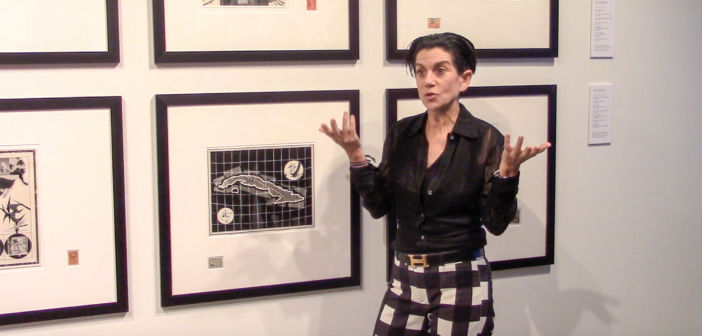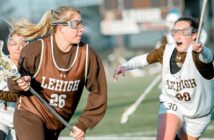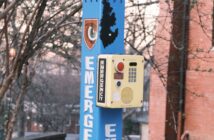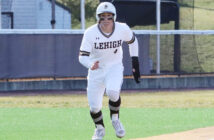With intense passion and quick wit, artist María Martínez-Cañas shared the story of her search for identity through the creation of photo-based art during a talk at the art gallery in Zoellner Arts Center on Oct. 20.
Martínez-Cañas said her creative process often involves making collages by piecing together layers of film.
“I describe myself almost as a visual poet,” Martínez-Cañas said. “I’m in front of a blank piece of paper, and I just start making marks and building a visual vocabulary of symbols.”
For Martínez-Cañas, creating art is a means of coming to terms with her identity, which has impacted how she looks at and reacts to the world. She describes herself as a Cuban-born, Puerto Rican-grown American citizen.
When she was only three months old, her family moved from Cuba to Puerto Rico.
“I am not an immigrant, I’m an exile,” Martínez-Cañas said. “It’s a very different situation. My family did not leave Cuba because we wanted a better life. They left because they had no choice.”
Her family was one of many that left Cuba in the early 1960s, soon after the Cuban Revolution. At the time, her parents had no idea how long they would be gone for — they kept their belongings packed away in suitcases for more than a year, expecting to return.
This November marks the 40th anniversary of Martínez-Cañas’s first exhibition, which was displayed when she was 17 years old. She attributes her success over the years to her passion for creating art.
“I was very lucky that I asked the right high school teacher, ‘What should I study?’” she said. “She said, without even thinking, ‘Do what you love to do the most.’”
For Martínez-Cañas, this was photography. At the time, she did not know that photography was even a subject one could study. This led her to study at Philadelphia College of Art, now known as University of the Arts, and later at the Art Institute of Chicago.
After completing her education, she was awarded a Fulbright scholarship in Spain, where she analyzed the maps Christopher Columbus used to discover Cuba. The maps provided a foundation for her work.
This is when Martínez-Cañas first crossed paths with Ricardo Viera, the director and curator of the Lehigh University Art Galleries. They were old friends reuniting at her gallery talk, where they swapped stories of their times traveling together over the years. Martínez-Cañas said she would not be successful today without Viera’s support.
“(Martínez-Cañas) is a photographer who works beyond the limits of the camera,” Viera said, “She is very inventive. She grabs an idea and builds from there.”
The María Martínez-Cañas exhibition opened Aug. 30 and will be on display until Dec. 10.
Patricia McAndrew, the coordinator of museum education and visitor services, said she was excited to finally meet Martínez-Cañas after being surrounded by her work for two months.
“When you actually hear her talk about what goes into making each of the works,” McAndrew said, “It was a lot more complex than what I thought it would be.”
While so much of Martínez-Cañas’s identity is wrapped up in her Cuban heritage, she has never been back to Cuba.
“I would love to visit,” she said, “But I am not taking out a visa to return to the country where I was born. That’s insulting.”






Comment policy
Comments posted to The Brown and White website are reviewed by a moderator before being approved. Incendiary speech or harassing language, including comments targeted at individuals, may be deemed unacceptable and not published. Spam and other soliciting will also be declined.
The Brown and White also reserves the right to not publish entirely anonymous comments.